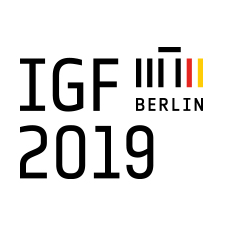IGF 2019 – Dynamic coalition on core internet values
29 Nov 2019 11:30h - 13:00h
This session was the second part of a joint meeting between the Dynamic Coalition on the Internet of Things (DC-IoT) and the Dynamic Coalition on Core Internet Values (DC-CIV). Participants discussed issues regarding Internet values, the responsibility of actors, and the appropriate discussion forums relating to the Internet of Things (IoT). Participants were also asked to share their comments and input on the summary of the 6F Framework Proposal on Internet Effects.
A discussion on Internet values was based on the work that the dynamic coalition has been doing since 2009. Mr Sivasubramanian Muthusamy (President, Internet Society India Chennai) spoke of what a valuable Internet should be: global (The Internet should be a global medium open to all), interoperable (An interoperable ecosystem that does not rely on one single type of underlying technology, whether on the physical or applicational level.), pen (All service, application, and data types should be allowed on the Internet, and the Internet’s core architecture should be based on open standards.),ree (Free from any kind of centralized control.)end-to-end (Application-specific features reside in the communicating end nodes of the network.), ser-centric (End users should maintain full control over the type of information, applications, and services they want to share and access.),
robust and reliable (The interconnected nature of the Internet and its dense mesh of networks have made it robust and reliable.)
These technical and architectural values should also be reflected in Internet governance. Security measures which are contrary to core Internet values, need to be temporary and transitory.
Mr Vint Cerf (Internet Pioneer) related these Internet values to six desirable properties of IoT, namely, reliability, security (integrated software updates, defence against abuse and access control), safety, accessibility, affordability, and sustainability (maintenance by manufacturers should be provided during the device’s lifespan). He also pointed out that the IoT needs to be able to operate even when the Internet connection is cut.
The discussion turned toward the responsibility of applying Internet values and ethical standards to the IoT. A combination of the following two approaches is necessary.
● Taking proportional responsibility by every stakeholder, including users: There cannot be a user-centric Internet without some level of user responsibility. IoT needs to be secured when it comes to the market, and its purpose of the use is important. This is because inappropriate use of IoT devices can cause ethical dilemmas and undermine Internet values. A responsible use of IoT requires capacity-building programmes intended for users. As Cerf mentioned, permissionless innovation does not mean irresponsible innovation.
● Adopting appropriate legislation: Depending on the type of IoT, there are different levels of legislation involved. In some IoT, like the automotive industry, the situation is heavily regulated. Other industries, like that of consumer products, lack regulation. Many countries have started legislating on data protection and privacy; however, the lack of harmonisation among these different legislations poses challenges to their enforcement. Indirect regulation has also an impact on IoT and Internet standards. Such an example is the influence of governments setting procurement policies on the IoT market.
Speaking of the necessity to harmonise IoT rules on the global level, Mr Jimson Olufuye (CEO Kontemporary, Africa ICT Alliance, Nigeria) stated that there is a need for a global framework. He suggested that the United Nations Commission on Science and Technology for Development (CSTD), as a subsidiary body of the Economic and Social Council (ECOSOC), would be the right forum to prepare IoT recommendations which could then move on to become a treaty at the level of the UN General Assembly. He emphasised the possibility of equal co-operation in this setting. Other participants voiced concerns about the slow progress within the UN structure and the uncertain outcomes.
Based on the number of issues which cannot be answered from only one perspective or country, Mr Alejandro Pisanty (UNAM, Mexico) presented a summary of the 6F Framework for Internet Effects Proposal with a request for comments. Pisanty explained that the purpose of this proposal was mapping online and offline conduct through a method of ‘removing the Internet’ from every online issue.
The Internet effects include mass scaling (effects of an action are multiplied online); identity and anonymity (it is easier to keep anonymity online); a trans-jurisdictional effect (involving several countries makes it difficult to attribute and prosecute attacks); barrier lowering (it is easier to be involved); friction reduction; and memory and forgetting (increasing memory for humankind to access larger amounts of information).
By Pavlina Ittelson
Related topics
Related event

